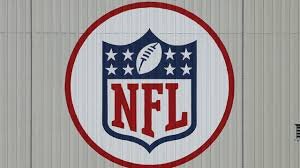
nfl suspensions
Understanding NFL Suspensions
The National Football League (NFL) has long been considered one of the most influential sports organizations in the world. Along with fame, money, and excitement, the league also carries the responsibility of maintaining fairness, integrity, and discipline. One of the ways the NFL enforces discipline is through suspensions, a form of punishment that temporarily prohibits a player, coach, or even a team staff member from participating in games or other official activities. Suspensions are usually the result of violations against league policies, ranging from substance abuse, on-field violence, personal conduct issues, or gambling. Unlike fines, which are financial penalties, suspensions strike at the very core of a player’s career because missing games means lost opportunities, damaged reputations, and in many cases, lost income. To truly understand why suspensions are so significant, one must look at their history, the reasons behind them, and their long-term effects on both players and the league.
The History of NFL Suspensions
The NFL did not always have strict disciplinary policies. In the early decades of the league, many violations were dealt with quietly or inconsistently. However, as the NFL gained prominence in the 1960s and 1970s, media attention forced the league to take a stronger stance on misconduct. By the late 1980s, substance abuse suspensions began to dominate headlines. Players like Stanley Wilson and Dexter Manley became infamous for repeated violations of drug policies. The 1990s introduced another dimension—personal conduct violations. With star players often in the spotlight, off-field behavior started drawing scrutiny. The league responded with clearer guidelines, eventually leading to the creation of the NFL Personal Conduct Policy. In the 2000s and beyond, suspensions grew not only in number but also in variety. Issues like performance-enhancing drugs (PEDs), domestic violence, and gambling have forced the league to implement stronger and more consistent disciplinary measures.
Common Reasons for NFL Suspensions
Suspensions occur for a wide variety of reasons, but the most common fall into several categories.
Substance Abuse
The NFL Substance Abuse Policy has existed for decades. Players who test positive for illegal drugs or misuse prescription drugs face suspension. Some famous suspensions involved players who repeatedly violated this policy, leading in some cases to year-long bans.
Performance-Enhancing Drugs (PEDs)
Using PEDs gives players an unfair advantage and threatens the integrity of the sport. The league imposes strict penalties for these violations, typically starting at four games for a first offense, with harsher punishments for repeat offenders.
Personal Conduct
Perhaps the most controversial category, personal conduct covers off-field behavior. Incidents of domestic violence, assault, or other criminal activities have resulted in suspensions. Critics often argue that the league has been inconsistent in enforcing these rules, with some players receiving minimal punishments while others are suspended for longer periods.
On-Field Misconduct
Not all suspensions are tied to off-field behavior. Excessively violent hits, unsportsmanlike conduct, or actions that threaten player safety can also result in suspensions. A famous example is Vontaze Burfict, who received one of the longest suspensions for repeated dangerous hits.
Gambling and Game Integrity
The NFL is particularly sensitive about gambling, as it directly threatens the credibility of the game. In 2022, wide receiver Calvin Ridley was suspended for betting on NFL games, highlighting the seriousness with which the league treats these violations. Gambling suspensions carry an especially strong stigma because they touch on the possibility of game fixing, something that could damage fan trust permanently.
Famous NFL Suspensions in History
Several high-profile suspensions have shaped the way fans and analysts view league discipline. Ray Rice’s 2014 suspension for domestic violence brought enormous criticism to the NFL for initially giving only a two-game suspension before extending it indefinitely. Tom Brady’s “Deflategate” suspension in 2016 sparked nationwide debate over whether the punishment was justified. Josh Gordon’s repeated suspensions for substance abuse became a cautionary tale about wasted potential. More recently, Deshaun Watson’s suspension for personal conduct violations reminded fans that the league continues to wrestle with how to balance discipline with public perception. Each of these cases demonstrates how suspensions are not only about enforcing rules but also about sending a message to players, fans, and society.
The Role of the NFL Commissioner
The Commissioner of the NFL holds immense power when it comes to suspensions. Under the collective bargaining agreement (CBA), the commissioner has the authority to decide the length and severity of suspensions, especially in cases involving personal conduct. This centralized authority has often been a source of controversy. Some argue it allows for swift decision-making, while others claim it leads to inconsistencies. For example, Roger Goodell has faced criticism for being too harsh in some cases and too lenient in others. The commissioner’s role shows how suspensions are not purely legal or procedural but also political and public relations-driven.
Impact of Suspensions on Players
For players, suspensions are devastating. Missing games not only affects their careers but also damages their public image. Endorsement deals often disappear, fan support wanes, and teammates may feel betrayed. A short suspension might be recoverable, but longer ones can effectively end a career. For example, some players never return to their peak performance after sitting out for a season or more. Beyond the financial and athletic consequences, suspensions also carry a heavy emotional and psychological toll.
Impact of Suspensions on Teams and Fans
Teams also suffer when key players are suspended. Coaches are forced to adjust strategies, and teams may lose crucial games because of missing talent. Fans, too, feel the effects, especially when star players are sidelined. Suspensions can weaken team chemistry, disrupt playoff hopes, and in some cases even tarnish a franchise’s reputation. For fans, the frustration comes from both disappointment in the player and anger at the league’s handling of discipline.
Controversies and Criticism of NFL Suspensions
While suspensions are meant to ensure fairness, they are not without controversy. Critics often point out the inconsistency in punishments. For example, a player might receive a longer suspension for using PEDs than another does for domestic violence, sparking debates about the league’s priorities. Transparency is another issue—many suspensions are announced with limited details, leaving fans and analysts to speculate. The appeals process also receives criticism, as players sometimes feel they are not given a fair chance to defend themselves. This has led to lawsuits and arbitration cases, highlighting the tension between the league, the players’ union, and public opinion.
The Legal and Financial Side of Suspensions
Suspensions often intersect with legal systems, especially in cases of criminal activity. While the NFL has its own disciplinary process, it sometimes overlaps with police investigations and court rulings. From a financial standpoint, suspensions mean lost salaries. Players typically do not get paid for the games they miss, which can cost millions for star athletes. Teams may also face financial losses due to decreased performance, reduced ticket sales, or damaged branding.
The Evolution of NFL Suspension Policies
Over the years, the NFL has tried to make its suspension policies more consistent and transparent. Updates to the Collective Bargaining Agreement have given players more rights in appealing suspensions. At the same time, public pressure has forced the league to respond more quickly and firmly to serious issues like domestic violence and gambling. In today’s world of social media and instant news, the NFL cannot afford to appear weak or indecisive. This constant scrutiny has made suspensions one of the most visible aspects of the league’s governance.
Comparing NFL Suspensions with Other Sports
When compared to leagues like the NBA, MLB, or NHL, the NFL often appears stricter in certain areas but inconsistent in others. For instance, MLB is known for extremely tough penalties for PED use, often suspending players for half a season or more. The NBA, on the other hand, tends to focus more on fines and short suspensions. These comparisons raise questions about what fans truly expect from professional sports organizations and whether a universal standard should exist.
The Future of NFL Suspensions
Looking ahead, suspensions will likely continue to evolve. With the growth of legalized sports betting in the United States, gambling violations may become a bigger issue, requiring even harsher penalties to protect the integrity of the game. Advances in drug testing technology will also make it harder for players to hide PED use. Furthermore, societal attitudes toward issues like domestic violence and mental health will shape how suspensions are handed out. The NFL faces the challenge of balancing fairness with public relations while ensuring the league remains competitive and credible.
Conclusion
NFL suspensions are more than just temporary punishments. They reflect the league’s attempt to enforce rules, protect its reputation, and send a message to players and fans alike. From substance abuse and performance-enhancing drugs to personal conduct violations and gambling, suspensions cover a wide spectrum of issues. While they often bring controversy and criticism, they remain a necessary tool for maintaining the integrity of professional football. As the league continues to evolve, so too will its approach to discipline. The history of NFL suspensions shows us that every decision affects not only the players involved but also the teams, the fans, and the very image of the sport itself. For those interested in deeper case studies, you can explore a detailed timeline of NFL suspensions here. Additionally, the official NFL Policy on Substances of Abuse can be found here. Together, these resources reveal just how complex and impactful suspensions have become in shaping the modern NFL.






